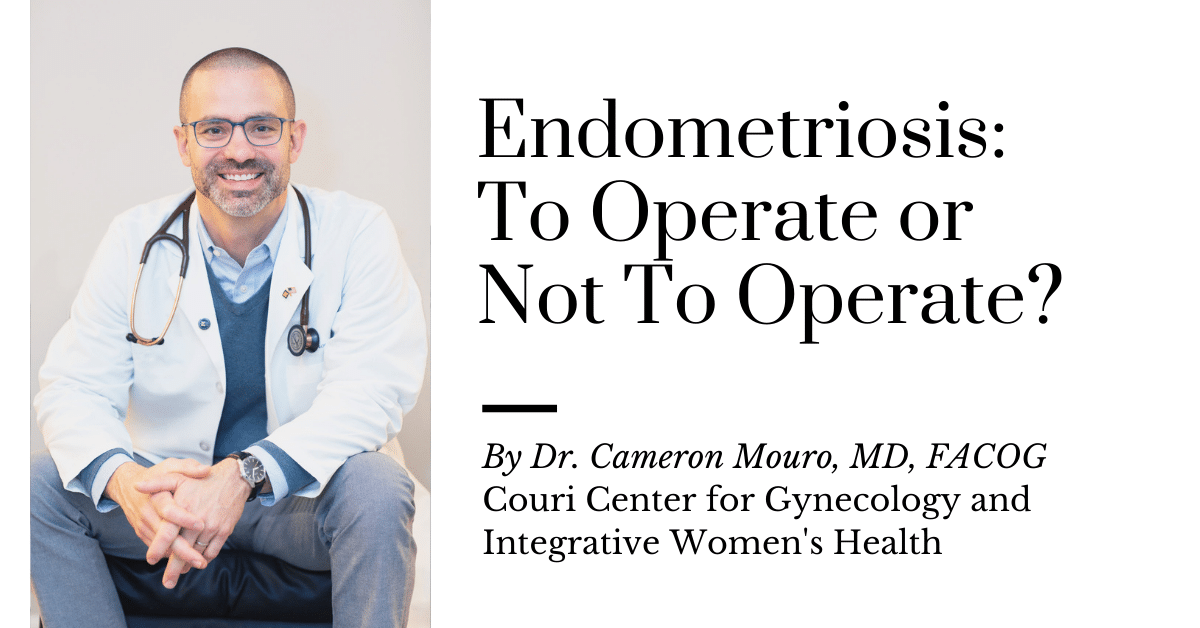
That is the question, both for a woman who may have endometriosis and for her gynecologist. In the diagnosis, as well as the treatment of endometriosis, surgery can play a valuable role. How much value is dependent on factors that are specific to an individual woman’s situation.
Endometriosis is a condition in which the lining tissue of the uterine cavity ends up attaching to and growing on other locations of the body, typically on the organs of the pelvis. It affects up to 10% of reproductive-aged women and can cause symptoms of severe menstrual cramping, pelvic pain, pain with intercourse, and infertility.
So when should surgery be considered?
When medical therapy has failed
The only way to make a definite diagnosis of endometriosis is with surgery. However, when symptoms like severe menstrual cramps are present, endometriosis can be assumed and safely treated without surgery. There are several medications that can be used to suppress endometriosis and reduce pain. The birth control pill, for example, is very effective in treating endometriosis. However, when the pill or other medications are not effective, surgery should then be considered. A laparoscopic procedure can be performed to confirm the diagnosis and remove the endometriosis.
When endometriosis is in the ovaries
Sometimes endometriosis can form what is called an endometrioma – a cyst in the ovary that is filled with menstrual tissue. Unfortunately, they typically do not go away with the medications described above. In the case of endometriomas, surgery plays a valuable role. A laparoscopic procedure can be performed to carefully remove them from the ovaries and eliminate additional endometriosis if present.
When infertility is a symptom
The inflammation and scarring caused by endometriosis can lead to infertility. In women experiencing the painful symptoms of endometriosis who have been unable to conceive by 6 to 12 months of trying, surgery should be recommended. A laparoscopic procedure can be done to remove the endometriosis and undo scarring of the reproductive organs. Studies have shown significant improvement in achieving pregnancy after this procedure is performed in women with endometriosis.
When definitive treatment is needed
Hysterectomy with removal of the ovaries is essentially a cure for endometriosis. In this procedure, the source of the endometriosis and the hormones that stimulate it are eliminated. Endometriosis symptoms typically fully resolve after hysterectomy, and the risk of recurrence is low. To date, there are no other non-surgical treatments for endometriosis that can provide these same long-term results. Thankfully, most hysterectomies for endometriosis can be performed laparoscopically, which means less postoperative pain and shorter recovery than the traditional method. In a woman with endometriosis who no longer desires fertility, hysterectomy is a valid and effective option for treatment.
Surgery for endometriosis is not required, either for diagnosis or treatment. But, in some instances, like those described above, it can be beneficial and should be considered. If you have endometriosis or are suffering from the symptoms associated with endometriosis, see your gynecologist and discuss what treatment options may be best for you. We’re here to help.
Dr. Mouro
